|
The exhibition Synagogues of East-Central Europe, 1781-1944 was opened at VGSJM Tolerance Center on the 12th of May, 2015. Embassy of Hungary in Vilnius presents the exhibition, prepared by the Hungarian Ministry of Foreign Affairs and Trade. It consists of 20 panels overlooking the architectural development of synagogues from the end of XVIII c. until mid-XX c. in the East-Central Europe’s territory. Centuries changed not only architectural forms of these buildings, but the place of the synagogues shifted in cities’ architectural plans. In early Modern Ages Jewish communities still lived in the ghettoes, excluded from Christian inhabited part of the city, synagogues were also build in ghetto territories. In mid-XIX century Jewish communities became more secular, assimilating into social life of the city, as result of the industrialization. On the same time the ornate synagogues started dominating the environment, reflecting the modern architectural styles. Last year Hungarian Government announced a synagogue rescue program, bringing to life 4 endangered buildings.
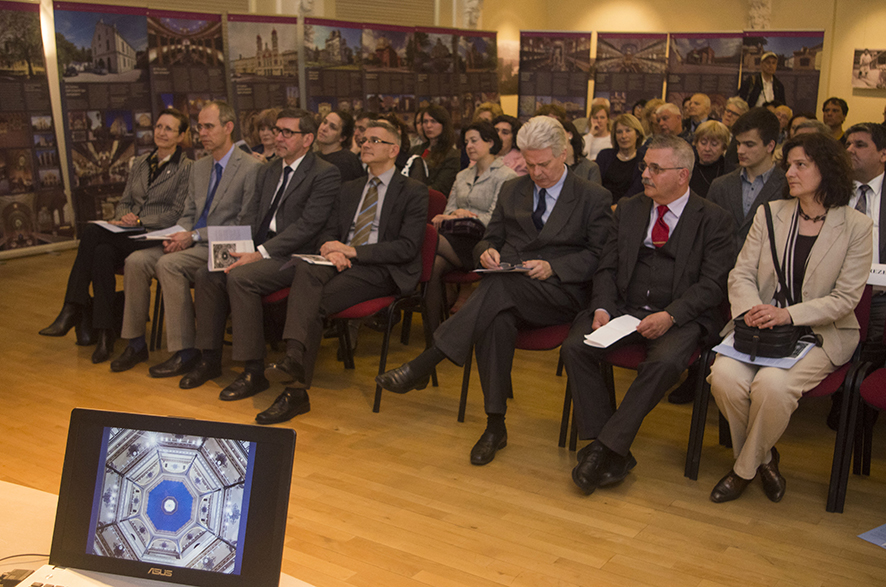 |
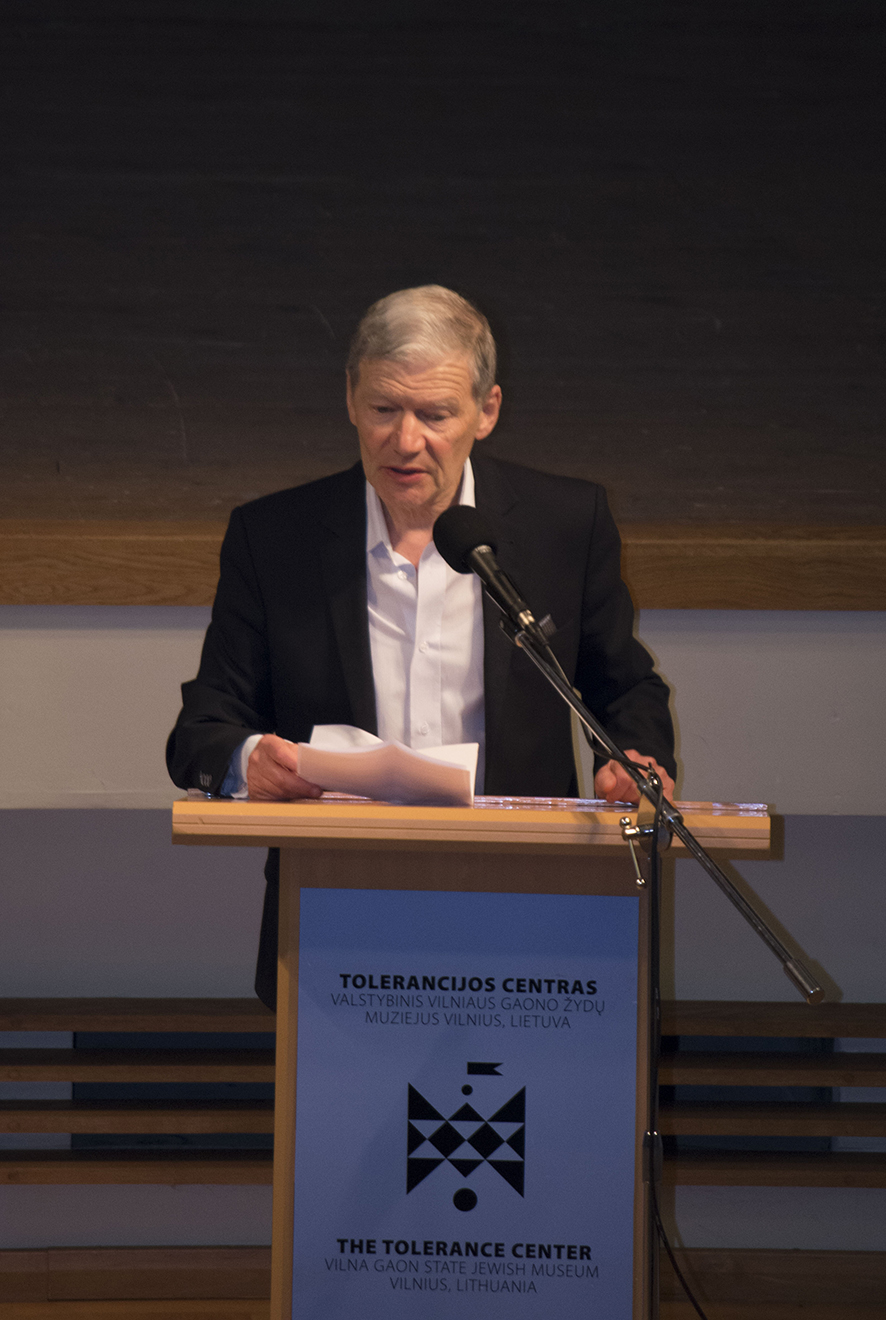 |
| Opening of the exhibition. In the first row (from left): Ambassador of Germany Jutta Schmitz, Mr. Peter Ziegler, Deputy Head of the German Embassy, Austrian Ambassador Johann Spitzer, Mr. Peter Baksy, Adviser of the French Ambassador Denis Pelbois, Hungarian Ambassador Zoltan Pezce and his wife. |
Director Markas Zingeris greets the audience |
Director of the Museum Markas Zingeris started the opening ceremony, greeting the audience and talking about the importance of synagogues’ for the history of Jewish community. The image of the synagogue, as the place for the gathering house of Jewish community, not only in Lithuania, but also in the Central-East Europe. The gradual integration process of modern Jewish communities into the society of their country of living.
Ambassador of Hungary Mr. Zoltan Pecze more thouroughly presented the exhibition: „This exhibition features synagogues built between 1781 and 1944 in Austria, the Czech Republic, Hungary, Poland, Romania, Slovakia, Slovenia, Serbia and Ukraine. By the words of Péter Kirschner, the President of the Hungarian Jewish Cultural Association: it is a journey in space and time, displaying aspects of Jewish life and its economic and cultural flourishing within multinational empires”. This year Hungary holds the chairmanship of the alliance together with the United Kingdom and Romania in a trio-format. The part of the chairmanship program – the restoration of the synagogues and the maintenance of the Jewish cemeteries in Hungary. (All speech).
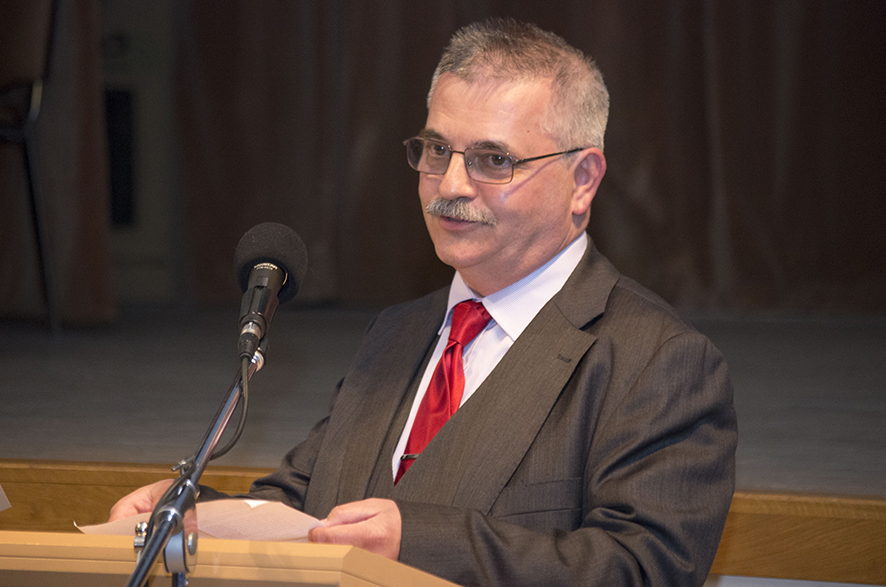 |
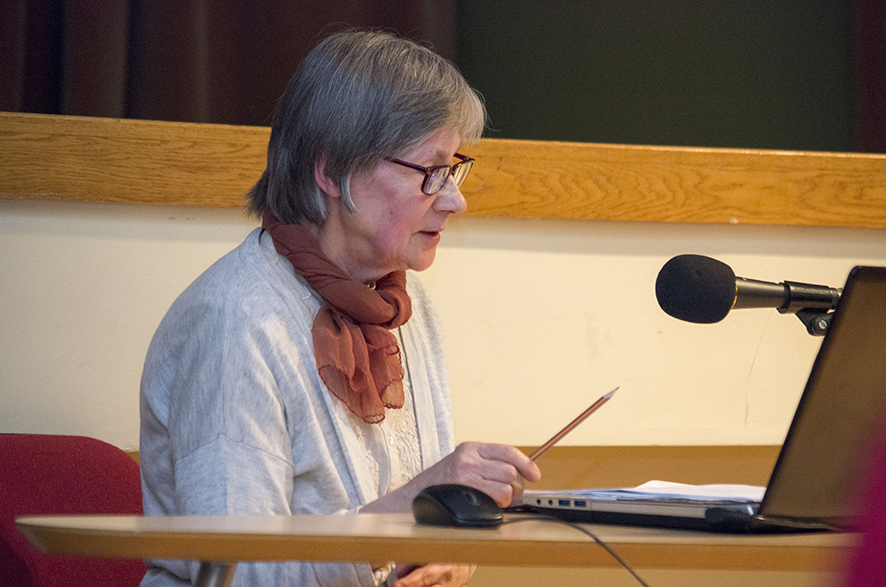 |
| Hungarian Ambassador Zoltan Pezce presents the exhibition |
Architecture historian Dr. Marija Rupeikienė‘s presentation about the synagogues in Lithuania |
Dr. Marija Rupeikienė, Historian of Architecture, compared Central-East synagogues with those, which were standing in Lithuania until World War II as well as the surviving former synagogues‘ buildings. According to M. Rupeikienė, the similarities are connected with the image of a synagogue: synagogues‘ place in cities’ or villages‘ urban plans, analogical structure of the plans and the same placing of the indoor spaces of early period synagogues. The Ark and the bimah are similarly placed within a synagogue; the same are their forms and the symbols. Distinctions are connected with the local peculiarities, related to the origin countries of synagogues: the construction laws, climate, and the traditions of professional and ethnic architecture. (The briefing of the lecture you can find here).
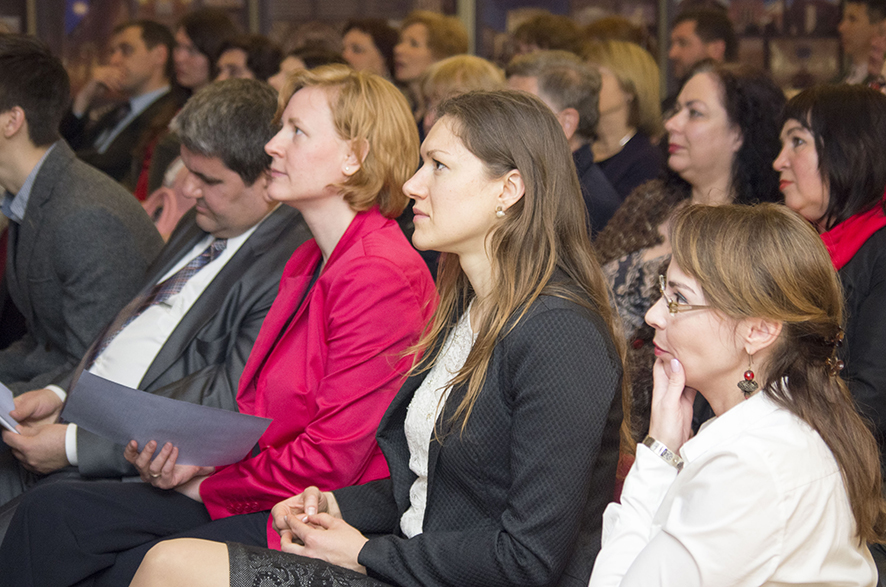 |
 |
| In the middle: Zsofia Barkaszi, Deputy Head of Hungarian Embassy and Liana Jagniatinskytė, Public Affairs Officer at the Embassy of Israel to Lithuania |
Member of LR Seimas Emanuelis Zingeris chats with the diplomats, residing in Lithuania |
Exhibition will be open until the 12th of August, 2015.
Photos by Paulius Račiūnas
|


